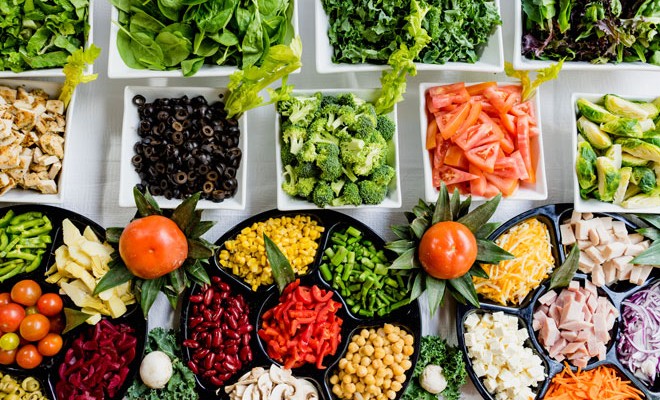 Feature Image by Dan Gold
Feature Image by Dan Gold
Even though you’re killing it in the gym day in and day out, you’re not going to hit your fitness goals if you don’t properly prioritize nutrition. And with the abundance of information on supplements and crazy diet fads, it can be easy to buy into the hype.
But instead of following a pre-prescribed method, like counting your calories, do your research and find what works best for you and your body. Lucky for you, we’re breaking down one of the main components of dieting aka macronutrients, which will ultimately help you devise your own health plan to hit your goals (it’s not as complicated as it seems!).
There are three macronutrient groups
Your body needs a variety of nutrients to function properly — some in small quantities and others in large quantities. Macronutrients are those nutrients you need in large amounts and there are three main macronutrient groups your body consumes daily: carbohydrates (sugars), lipids (fats), and proteins. Chances are, you know a good bit about each of these groups already. For example, avocados are a healthy source of fat, almonds are protein-rich, and complex carbohydrates (aka whole grains and vegetables) are not the enemy. Simply knowing the difference between these three groups means you’re well on your way to more balanced meals.
Balance is everything
In order to eat a balanced diet, you should be dividing your macronutrients appropriately. The most common breakdown includes 40 percent carbs, 30 percent fats, and 30 percent proteins. You can do some tinkering with this ratio depending on your specific goals, but this is the ratio most people like to stick to.
Don’t obsess over the calories
The great thing about portioning out your macronutrients is that it’s more about the percentage of each macro you’re consuming as opposed to the number of calories. Rather than obsessing over how many calories each meal is, determine how much of each macro percentage you’ve eaten for the day.
People meal prep for a reason
Plan and prep your meals ahead of time so you don’t have to think twice about whether or not you’ve had your carb intake for the day. Easy meals include a chicken breast and veggies combo or brown rice and salmon — but whatever you decide, store them in your fridge in individual containers so your macronutrients are already divided for you.
Track your progress
Luckily, we live in a day and age where you can track your progress without all the guesswork. Apps like MyFitnessPal allow you to log what you eat throughout the day so you can see how many macros you’ve eaten so far. Simply type in what you ate, and the app will do the rest.
What are your thoughts on macronutrients? Weigh in on the comments below!
xx, The FabFitFun Team





